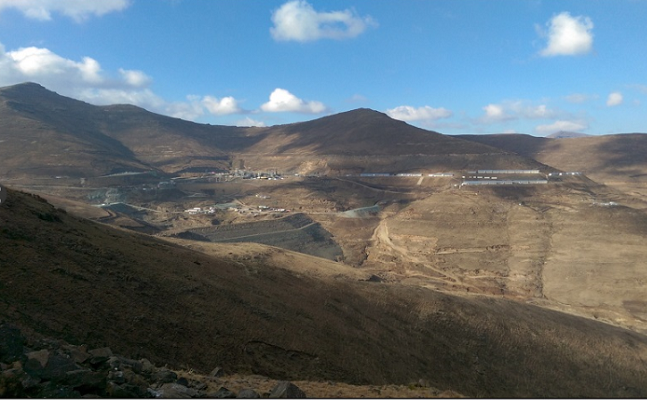Liqhobong Diamond Mine Commences Production Ramp-up
October 23, 16
(IDEX Online) – Firestone Diamonds plc has announced the recovery of the first diamonds at the Liqhobong diamond mine as the project moves into the production ramp-up phase. Liqhobong is owned 75% by Firestone and 25% by the government of Lesotho.
The first ore has been treated through plant as scheduled with diamonds reporting to the sort house, the miner said in a statement. Initial recoveries are as expected and confirm presence of fancy yellow diamonds.
Production guidance for the financial year ending June 2017 remains as announced in July 2016, with 1.8 to 2 million tonnes to be treated and between 380,000 and 450,000 carats to be recovered.
Full production rates are expected to take at least six months.
All major construction activities have been completed, and the plant is 91% commissioned, ahead of a revised target of 50%.
Stuart Brown, Chief Executive Officer, commented: "It is extremely exciting to have reached the end of the construction phase and to start the next chapter of the Liqhobong diamond mine, as we ramp-up production to become a one million carat per annum producer.
"Discovered in the 1950s, this exciting diamond deposit is on the cusp of entering commercial production and I commend the team for completing construction ahead of revised schedule and achieving over three million man hours without a lost time injury - a truly exceptional accomplishment."
Following the completion of all major construction and commissioning stages, the production ramp-up phase has now started. Firestone anticipates that the ramp up process to full nameplate capacity, being 3.6 million tonnes per annum or 500 tonnes per hour, to recover up to 1 million carats per annum, will take at least six months.
Firestone has scheduled its first diamond sale to take place in Antwerp in January 2017. The sale will complete early in February 2017. Thereafter the company expects to host two sales per quarter. As the company increases production through the ramp-up phase and begins to treat larger volumes of kimberlite from the main pit, it will obtain an enhanced understanding of the occurrence and value of large stones over time.